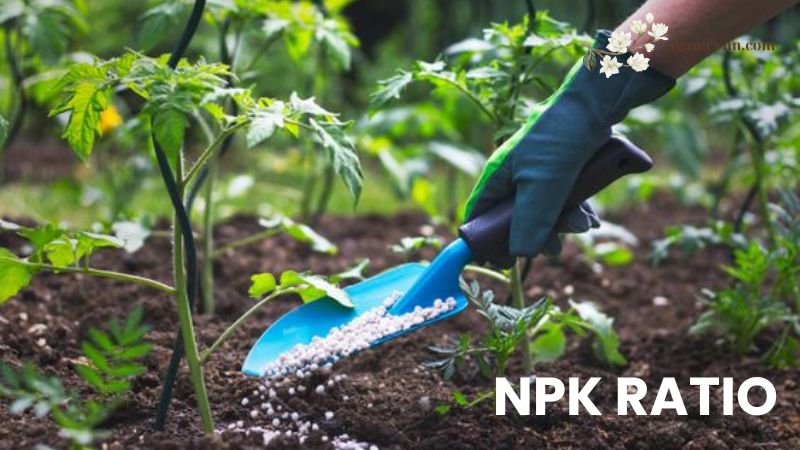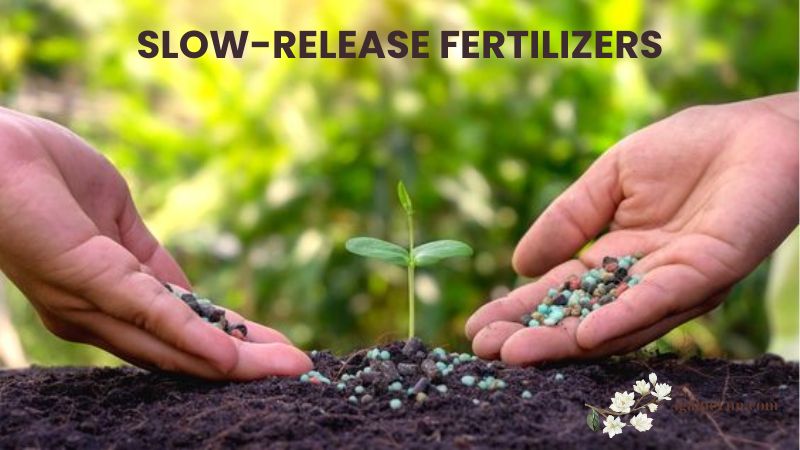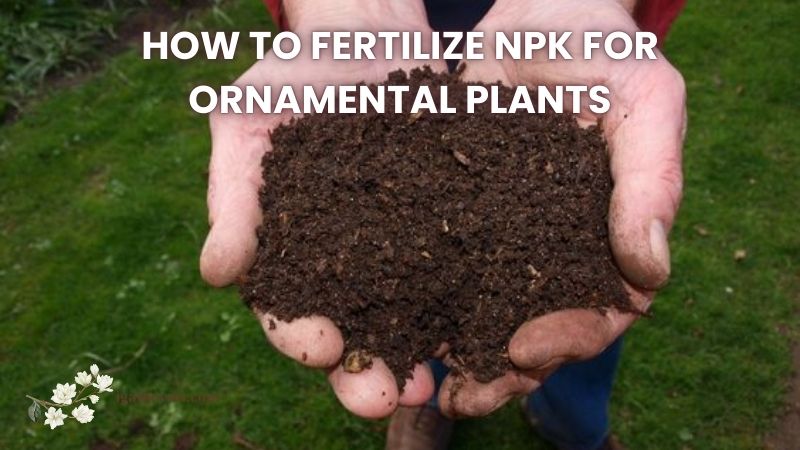Fertilizing ornamental plants with NPK (Nitrogen, Phosphorus, and Potassium) is essential to promote healthy growth, vibrant blooms, and robust root systems. Understanding the specific needs of your plants and applying the correct balance of nutrients can make a significant difference in their overall health and appearance. This article from Igamevnn provides a detailed guide on how to fertilize NPK for ornamental plants, ensuring you achieve the best results in your garden.
Table of Contents
ToggleUnderstanding NPK and Its Importance
Nitrogen (N)
Nitrogen is crucial for leafy, green growth. It is a primary component of chlorophyll, the compound that plants use in photosynthesis to convert sunlight into energy. When nitrogen levels are adequate, plants exhibit lush, green foliage. However, an excess of nitrogen can lead to excessive leaf growth at the expense of flowers and fruits.

Phosphorus (P)
Phosphorus is essential for root development and flowering. It plays a vital role in energy transfer within the plant, promoting strong root systems and enhancing the development of flowers and seeds. A deficiency in phosphorus can result in stunted growth and poor flowering.
Potassium (K)
Potassium aids in overall plant health, disease resistance, and the quality of flowers and fruits. It helps regulate various physiological processes, including water uptake and enzyme activation. Adequate potassium levels ensure that plants are resilient to stress and produce high-quality blooms.
Choosing the Right Fertilizer
Determine the Needs of Your Plants
Different ornamental plants have varying nutrient requirements. For instance, flowering plants often require more phosphorus to support blooming, while leafy plants may benefit from higher nitrogen levels. Understanding your plants’ specific needs is the first step in knowing how to fertilize NPK for ornamental plants.
Select the Appropriate NPK Ratio
Choosing the correct NPK ratio is crucial for meeting your plants’ needs:
- High Nitrogen (e.g., 10-5-5): Ideal for promoting leafy growth in plants like ferns and ornamental grasses.
- Balanced (e.g., 10-10-10): Suitable for general use and a wide variety of ornamental plants.
- High Phosphorus (e.g., 5-10-5): Best for encouraging flowering and root development in plants like roses and flowering shrubs.

Application Methods on How to Fertilize NPK for Ornamental Plants
Granular Fertilizers
Granular fertilizers are solid particles that you can spread over the soil surface or mix into the soil.
- Broadcasting: Spread the granules evenly over the soil surface, ensuring even coverage.
- Top Dressing: Apply the granules around the base of the plants, taking care not to let them touch the stems directly.
- Incorporation: Mix the granules into the soil before planting to ensure even distribution of nutrients.
Liquid Fertilizers
Liquid fertilizers can be applied directly to the soil or sprayed onto the leaves.
- Foliar Feeding: Spray the liquid fertilizer directly onto the leaves for quick nutrient absorption.
- Soil Drench: Apply the liquid fertilizer to the soil around the base of the plants, allowing it to soak into the root zone.
Slow-Release Fertilizers
Slow-release fertilizers release nutrients gradually over time, providing a steady supply of nutrients to the plants. They are ideal for long-term feeding and require fewer applications.

How to Apply NPK Fertilizer
Read the Label
Always read the manufacturer’s instructions on the fertilizer package. Follow the recommended application rates and guidelines to avoid over-fertilization, which can harm your plants.
Measure Correctly
Use the recommended amount of fertilizer based on the size and type of your plants. Over-application can lead to nutrient imbalances and damage the plants.
Apply at the Right Time
Timing is crucial when learning how to fertilize NPK for ornamental plants.
- Growing Season: Fertilize during the active growth period, typically in spring and summer, to support vigorous growth and flowering.
- Dormant Period: Avoid fertilizing when plants are not actively growing, usually in late fall and winter, as this can lead to nutrient wastage and potential damage.
Watering
Proper watering is essential to help the fertilizer reach the roots and be absorbed by the plants.
- Before Application: Water the plants thoroughly before applying fertilizer to prevent root burn.
- After Application: Water again after applying fertilizer to help dissolve the nutrients and carry them into the soil.
Frequency of Fertilization
Annuals
Annual plants have a short growing season and benefit from frequent fertilization. Apply NPK fertilizer every 4-6 weeks during the growing season to support continuous growth and flowering.
Perennials
Perennial plants, which return year after year, generally require fertilization twice a year. Apply NPK fertilizer in early spring to kickstart growth and again in mid-summer to support continued development.
Shrubs and Trees
Shrubs and trees typically need fertilization once or twice a year. Apply NPK fertilizer in early spring to encourage new growth and in late fall to prepare the plants for winter dormancy.
Additional Tips
Conduct a Soil Test
Performing a soil test can help you understand the existing nutrient levels in your soil. This information allows you to adjust your fertilization practices to meet the specific needs of your plants.
Observe Plant Response
Monitor your plants for signs of nutrient deficiencies or excesses. Yellowing leaves, poor growth, or burnt leaf edges can indicate imbalances. Adjust your fertilization schedule and amounts accordingly.
Organic vs. Synthetic Fertilizers
Consider whether you prefer using organic or synthetic fertilizers. Organic fertilizers, such as compost and manure, release nutrients slowly and improve soil health. Synthetic fertilizers provide immediate nutrient availability but should be used carefully to avoid over-application.
Proper Storage
Store fertilizers in a cool, dry place, away from direct sunlight and moisture. Proper storage ensures the longevity and effectiveness of the fertilizer.
Conclusion
Knowing how to fertilize NPK for ornamental plants is essential for maintaining healthy, vibrant gardens. By understanding the roles of nitrogen, phosphorus, and potassium, selecting the appropriate NPK ratio, and applying fertilizers correctly, you can ensure your ornamental plants thrive. Remember to observe your plants’ responses and adjust your fertilization practices as needed. With proper care and attention, your ornamental plants will reward you with stunning blooms and lush foliage.
Related Posts:
- The World of Squash and Pumpkin: A Comprehensive Guide
- The Ultimate Guide to Greenhouse Vegetable Growing
- Understanding Lettuce is Bitter and Managing:…
- Best Root Stimulant for Orchids: A Comprehensive Guide
- Understanding Why Chilli Leaves Turn Yellow: Causes…
- What Climbing Plants Should I Plant in Winter?

